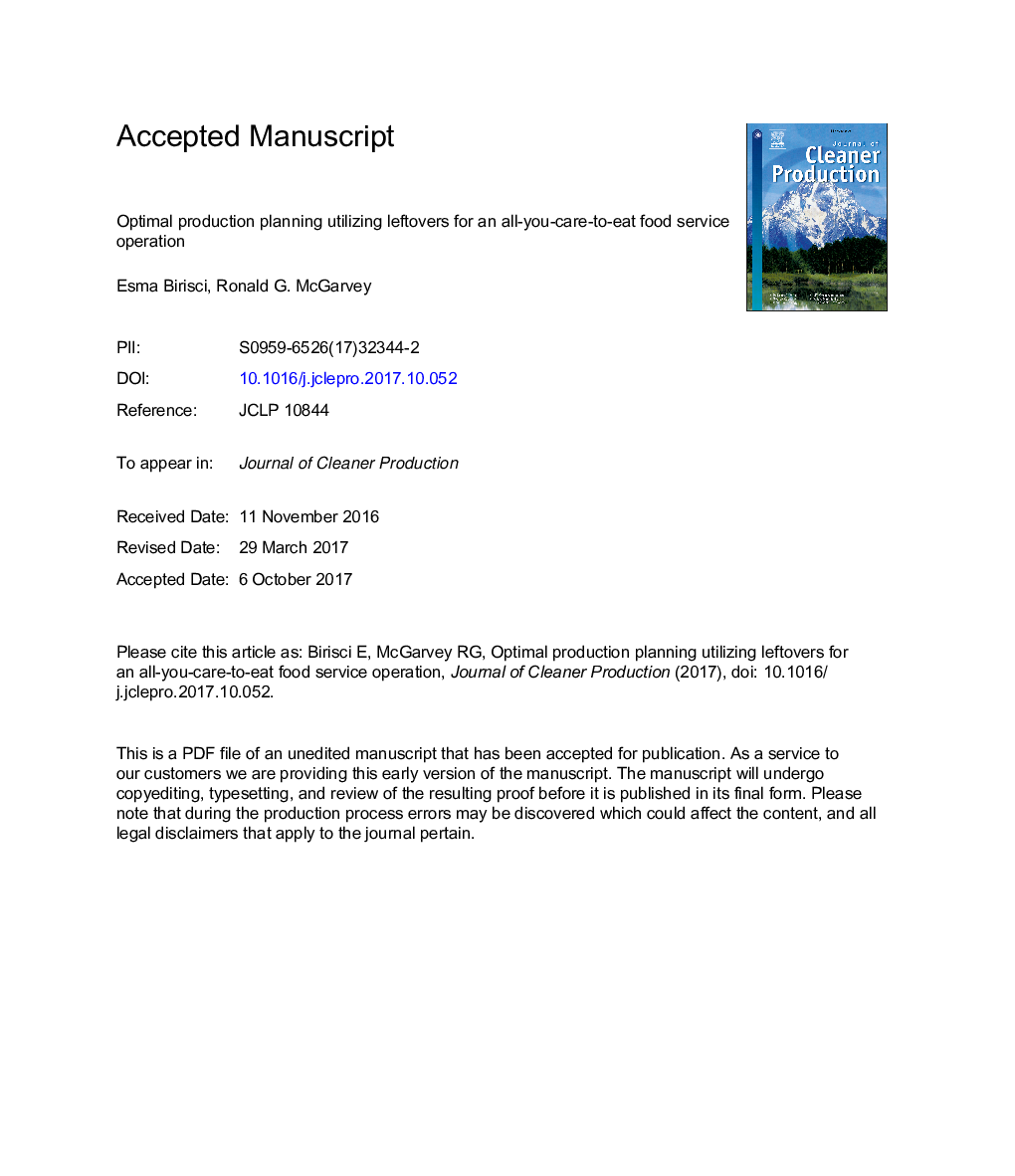| Article ID | Journal | Published Year | Pages | File Type |
|---|---|---|---|---|
| 8100350 | Journal of Cleaner Production | 2018 | 28 Pages |
Abstract
Food service operations in an all-you-care-to-eat environment need to consider two conflicting objectives: a desire to reduce overproduction food waste (and its corresponding environmental impacts), and an aversion to shortfalls (in which some customer demands go unsatisfied). A particular challenge in such buffet-style operations is the absence of any lost marginal revenue associated with lost sales that can be used to measure the shortfall cost, complicating any attempt to determine a minimum-cost solution. This research presents a multi-criteria optimization approach to identify the efficient frontier of points lying between the minimum-waste and minimum-shortfall solutions. In particular, we identify optimal production adjustments relative to demand forecasts, demand thresholds for utilization of leftovers, and percentages of demand to be satisfied by leftovers, considering two alternative metrics for overproduction waste: mass; and greenhouse gas emissions (to account for the embodied chemical usage during farming, transportation, and landfill decomposing of overproduced food waste). A statistical analysis of the changes in decision variable values across each of the efficient frontiers can then be performed to identify the key variables that could be modified to reduce the amount of wasted food at minimal increase in shortfalls (or, alternatively, to reduce the amount of shortfalls at minimal increase in waste). We illustrate our approach with an application to empirical data from Campus Dining Services operations at the University of Missouri. Our analysis suggests that targeted production level modifications, rather than blanket increases or decreases, can allow food service providers to reduce overproduction food waste without significant increases in demand shortfalls.
Related Topics
Physical Sciences and Engineering
Energy
Renewable Energy, Sustainability and the Environment
Authors
Esma Birisci, Ronald G. McGarvey,
